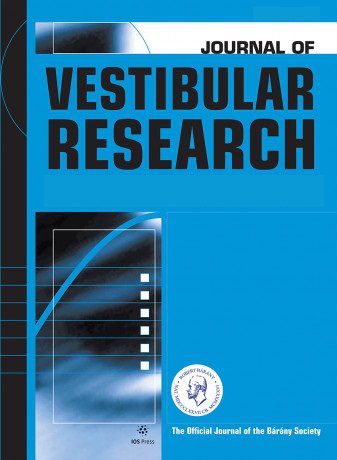

Peer-Reviewed Article
Interference between postural control and spatial vs. non-spatial auditory reaction time tasks in older adults
Fuhrman SI, Redfern MS, Jennings JR, Furman JM; Interference between postural control and spatial vs. non-spatial auditory reaction time tasks in older adults; Journal of Vestibular Research, vol. 25(2), pp. 47-55, 2015.
Abstract
This study investigated whether spatial aspects of an information processing task influence dual-task interference. Two groups (Older/Young) of healthy adults participated in dual-task experiments. Two auditory information processing tasks included a frequency discrimination choice reaction time task (non-spatial task) and a lateralization choice reaction time task (spatial task). Postural tasks included combinations of standing with eyes open or eyes closed on either a fixed floor or a sway-referenced floor. Reaction times and postural sway via center of pressure were recorded. Baseline measures of reaction time and sway were subtracted from the corresponding dual-task results to calculate reaction time task costs and postural task costs. Reaction time task cost increased with eye closure (p= 0.01), sway-referenced flooring (p< 0.0001), and the spatial task (p= 0.04). Additionally, a significant (p= 0.05) task x vision x age interaction indicated that older subjects had a significant vision X task interaction whereas young subjects did not. However, when analyzed by age group, the young group showed minimal differences in interference for the spatial and non-spatial tasks with eyes open, but showed increased interference on the spatial relative to non-spatial task with eyes closed. On the contrary, older subjects demonstrated increased interference on the spatial relative to the non-spatial task with eyes open, but not with eyes closed. These findings suggest that visual-spatial interference may occur in older subjects when vision is used to maintain posture.
People

Affiliate
Joseph Furman
Professor of Otolaryngology, Neurology, Physical Therapy and Bioengineering
Research

